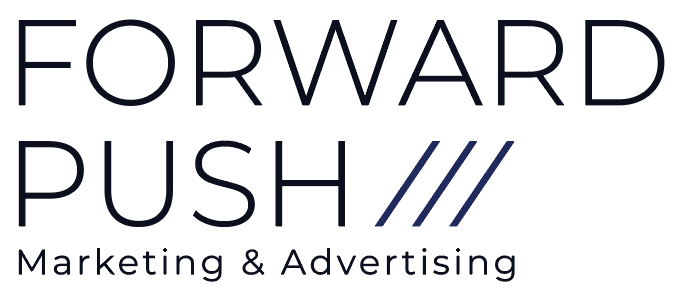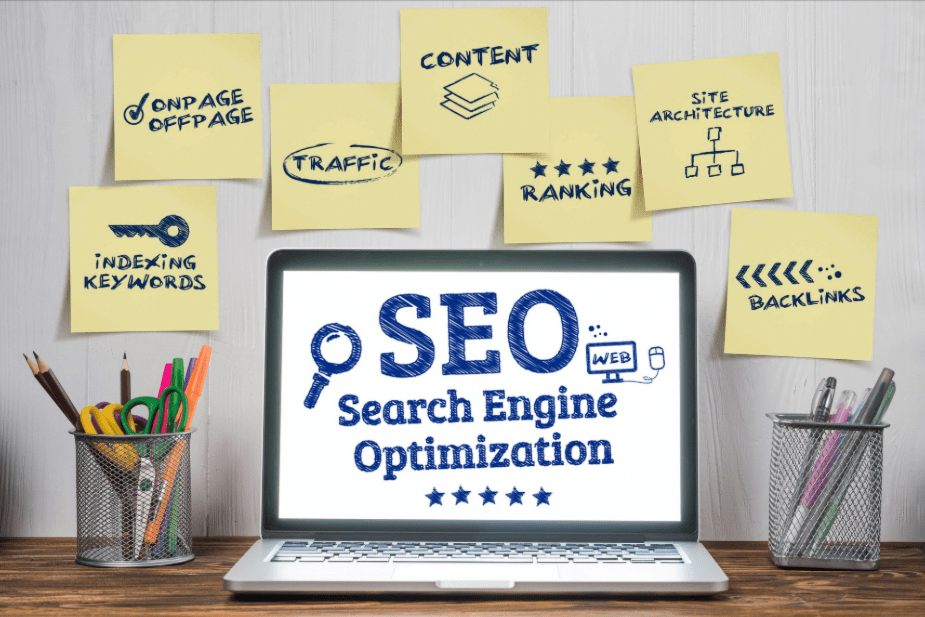Don’t Make These Mistakes
As a web design agency, we see some of the biggest mistakes people make when hiring a web designer. In an attempt to help you avoid the same concerns, we’ve compiled the top 20 for a comprehensive list of what to look for.
Whether you’re a CMO or small business owner, these points will help you hire the best web designer for your company based on your needs. Let’s get started!
-
Focusing Only on Design, Not Development
Most people refer to building a website as designing a website, but there’s another crucial factor: developing the code that brings your ideas to life. And while a website designer can also be a developer, they are two different skill sets. Hiring a team that has specialists for each role ensures your final website is beautiful and functional.
-
Ignoring the User Experience
Websites are more than combining design elements with some text. The user experience is how well your website serves visitors’ needs, and we often see owners ignore this in favor of a design element. But when implemented, a quality user experience can improve conversions like purchases or signups by 400%.
It’s possible for exciting design and user experience to live in harmony, but we always recommend prioritizing ease of use. Make sure all text is easy to read, links easy to find, and that design best practices are followed so that your visitors turn into clients.
-
Not Focusing on a Mobile-Friendly Design
Over 60% of internet browsing is done on mobile, and 74% of people are more likely to return to a website if it’s optimized for mobile. Without a mobile website of your own, you could be losing potential customers as they get frustrated with the difficult user experience.
A mobile-friendly design is typically a part of your website template, but there are varying degrees of flexibility with it. Your website design company can help you decide the best way to implement a mobile-friendly design so you won’t be leaving revenue on the devices.
-
Building for You, Not Your Customer
It’s important to like your website. But it’s more important for your customer to engage with it well. This means making relevant information like your prices, location, and FAQs easy to find. If a piece of content doesn’t result in a resounding “yes” when looked at through an audience filter, then it shouldn’t be on your website.
-
Not Performing Due Diligence
Due diligence will save you money. Period. Without taking the time to review how a company operates and whether it uses ethical business practices, you may get into a tough situation with your website on the line.
Ask other business owners, look at reviews online, and don’t be afraid to ask thorough questions while vetting a prospective web designer. If they don’t give satisfactory answers, then consider looking elsewhere.
-
Paying Too Little
A new website is a big investment. And if you’re bootstrapping your growth or have additional investments happening at the same time, you don’t want to pay too much. But pay too little and your website may not be usable.
A website’s low cost could be due to a designer’s lack of experience, which isn’t inherently a bad thing. We all start somewhere! But if you need some complex design elements, cutting costs on design may hurt you long term.
Another reason a website’s cost may be low is working with only a designer, when you should really be working with a designer, developer, and copywriter in an agency setting.
They are specialists for each step in the process so your new website delivers the results you want and need. This will be more expensive because you’re paying for multiple experts, but the added cost is most definitely worth it.
-
Paying Too Much
In the same way that paying too little can endanger your company’s success, paying too much can as well. You want to ensure you’re investing in a quality website redesign, but you also don’t want to create a shaky financial situation because of a very expensive website.
How can you tell if you’re paying too much? Because websites are so diverse in features and functions, it’s tricky to put a specific number on “too much”. For small businesses though, expect to pay between $6,000 and $15,000. If the estimate is too far outside of this range, you may want to rethink your choice of a web design agency.
-
Ignoring the Value of a CMS
A CMS, or Content Management System, is your gateway to managing your website. A CMS improves time efficiency, and reduces the amount of hand-coding required to build and update your website.
The most common CMS platforms are WordPress, Squarespace, Wix, and Shopify. WordPress is the most flexible. A developer can adjust features as needed, whether while building a custom website or when working off of a template. Squarespace or Wix are drag and drop editors designed for maximum ease of use, and Shopify helps you launch an online store quickly.
If you’re anticipating self-managing your website, a CMS will make your life much easier. Now, how do you choose the right one? We’re so glad you asked.
-
Not Choosing the Right CMS for Your Needs
There are many different CMS options available, each with its pros and cons.
To find the best CMS for you, consider what your website needs and the resources available. A custom coded WordPress website will be more expensive than a Squarespace build-out. Make sure you work with a web designer that takes these needs into account before making their CMS recommendation.
When working with a web design agency, always ask what CMS they recommend for your situation, and if there will be additional costs for plugins or upgrades.
-
Hiring an Agency with a Poor Website
Some web design agencies fall prey to the classic adage, “the cobbler’s kids without shoes”. They can create incredible websites, and have maybe even won awards, but if their website isn’t as good as their clients’, then there’s something wrong.
For every web designer you review, mentally replace their logo with yours. Would you like that website to be your own? Look at more than the framework. Consider how they write, how the photo and design elements work together, and how easy it is to find crucial information.
-
Only Considering Local Web Design Companies
With the advances in communication, file sharing, and video calling platforms, an agency can be right there with you throughout the process without the overhead. In fact, hiring a remote agency can create a better final result instead of settling for a local agency that doesn’t completely align with your needs and goals.
-
Not Designing for Conversions
Ultimately, your website has only one purpose: to increase revenue. Everything on it, from FAQs to your brand story to blogs serve this goal by educating your customers. We often see this when companies focus too much on the features and not enough on the core action they want their audience to take: a purchase, a phone call, or some other action.
By designing your website for conversions, you can ensure your website will perform that ultimate action: helping a customer complete your goal conversion.
-
Stopping After the Website Launches
Every company needs a post-launch plan for their website. Websites are living, breathing resources that need to be regularly updated. Not only is it important to keep contact information and store location information up to date, but it’s also important to update the content for SEO purposes.
Make sure you have this plan in place with your web designer. Ask them about ongoing maintenance, if they can help you create a blogging strategy, and how they can support SEO growth after launch.
-
Ignoring an SEO Strategy
As of 2016, 72% of consumers who did a local search visited a store within five miles. This is why a local SEO strategy is an essential part of your new website. Local SEO requires a long-term strategy, and it needs to be discussed from the first meeting with your web designer and developer.
Before signing the contract, inquire about their SEO strategy and how they use it when launching websites. Look for a designer that focuses on today’s intent-based strategy rather than straight keyword placement. They should also offer recommendations for ongoing SEO support like link building and blogging.
Speaking of blogging, that’s important even aside from its SEO value.
-
Not Including a Regular Blogging Strategy
One of the ideal ways to ensure your website remains frequently updated while improving its SEO is by implementing a blogging strategy. Blogging as a company bolsters your thought leadership in the industry while also sharing your unique point of view with potential customers.
It can also improve your chances of seeing a positive ROI by up to 13x. We recommend blogging at least twice per month, but up to four times if you have the resources to maintain it. (Either your own time or by working with a marketing agency.)
-
Not Controlling Your Website Domain
Your website domain (www.yourcompanyname.com) is your asset, and you need to control it. If something goes wrong in the working relationship with your web designer, you don’t want losing your website to be a worry.
There are times when we help clients purchase their domains, but it’s always structured so that it’s registered under their name and email so they receive all notifications. Always ask how your domain is handled before signing on with a web designer to prevent any ownership concerns.
-
Working with Designers Who Require Long-Term Commitments
Your website will need ongoing support, but it doesn’t have to be from the same company that created it. Sometimes maintaining a relationship works out best because they know you, your brand, and your website, but it’s not required.
If a company requires you to only work with them once the website is complete, that’s a red flag. You own your website, and a long-term commitment isn’t necessary.
-
Investing in Marketing Before a Quality Website
One of the biggest mistakes we see companies make is investing in a marketing strategy before updating their website. If you’re investing in the marketing to drive traffic to your website, but your website isn’t ready for the increase in viewers (in either content or in experience), then you won’t see the results you’re looking for.
Hiring a marketing and web design agency can help you determine the best way to balance marketing your company while simultaneously building out your new website. Then they can structure a post-launch strategy so your website is fully utilized.
-
Being Disengaged Throughout the Process
Great websites aren’t built overnight, and your engagement throughout the process ensures you’ll like the result. If your website design agency sends you a document to complete or review, make sure you invest time into completing it well. Your website’s success relies on this!
This doesn’t mean to expect an email every day, but hiring the best web designer for your company means being in regular contact throughout the entire process.
Being engaged throughout the project means responding to emails promptly, offering examples of what you’re looking for, and including specific feedback. With this, your web design agency will have the information they need to create the website you’re envisioning.
-
Refusing to Invest in Brand Photography
Your customers are 55% more likely to retain information if it’s paired with an image. Use that to your advantage by investing in brand photography on your website. (And on social media!) It not only helps your brand, but it also offers the company-customer connection that is so important in today’s business landscape.
Brand photography includes headshots for your About page while also reducing the amount of stock images you need for your Home and Services or Product pages.
We’re the Website Design Agency That You’ve Been Looking For
If you’ve been frantically searching “web designers near me” to find the right web designer for you, we hope these tips have helped solidify what you need and what to ask when hiring an agency. From CMS to SEO and all the letters in between, now you know the 20 mistakes to avoid. Ready to get started? Let’s talk. Give us a call at (415) 640-8009.






